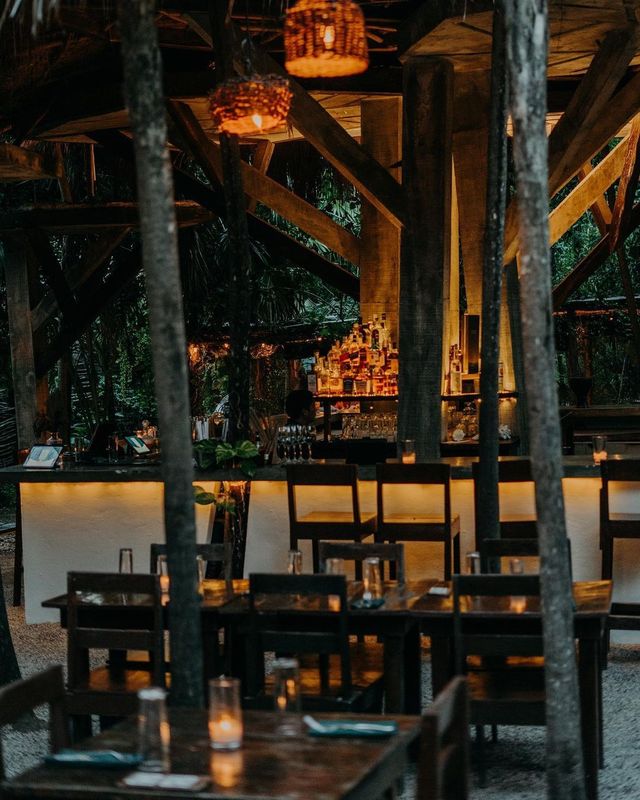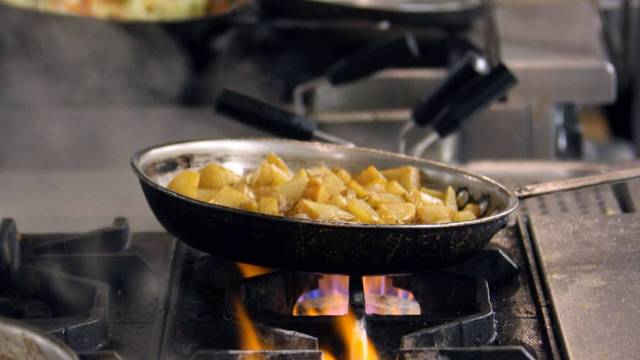Instagrammable Restaurants Islamabad: Picture-Perfect Dining Experiences
Instagrammable Restaurants Islamabad: Picture-Perfect Dining Experiences
Blog Article
Savor Authentic Eastern Cuisine With a Pan-Asian Twist for a Culinary Journey
Starting a culinary journey through authentic Asian cuisine, enhanced with a Pan-Asian spin, supplies a distinct opportunity to explore the rich tapestry of tastes that define the region's diverse culinary traditions. This experience invites you to savor the charming equilibrium of tastes-- wonderful, salty, spicy, and sour-- balanced by aromatic herbs and spices. Picture the ingenious combination of Thai curry and ramen or the unforeseen pleasure of sushi burritos. As you consider these attracting dishes, consider the social stories and historic impacts that form them, each bite supplying a story waiting to be found.

Discovering Pan-Asian Tastes
In the world of worldwide gastronomy, Pan-Asian food attracts attention for its remarkable diversity and the harmonious interaction of tastes from various Eastern cultures. This cooking approach commemorates the distinct ingredients and abundant traditions located throughout the continent, developing a tapestry of preferences that is both appealing and satisfying. Secret to Pan-Asian food is its ability to stabilize contrasting flavors-- wonderful, salted, spicy, and sour-- while highlighting the freshness and high quality of each active ingredient.
From the umami-rich soy sauce of Japan to the fiery chili peppers of Thailand, Pan-Asian cuisine supplies a comprehensive combination of tastes. These components are commonly combined in inventive methods, improving recipes with layers of intricacy. For example, the use of aromatic natural herbs such as lemongrass and cilantro, usual in Vietnamese and Thai food, adds a rejuvenating illumination to recipes, while the incorporation of coconut milk provides a velvety, abundant texture.
The focus on fresh produce and fragrant flavors makes certain that each dish is not only a feast for the taste buds yet also for the senses. Pan-Asian cuisine invites diners to begin on a culinary journey, checking out the substantial and differed landscapes of Eastern gastronomy with every bite.
Blend Recipes to Attempt
While Pan-Asian cuisine is commemorated for its conventional tastes, the contemporary culinary landscape is significantly accepting fusion recipes that mix these traditional elements with impacts from various other regions. This cutting-edge technique not only honors the abundant heritage of Asian cooking arts but additionally introduces novel preference experiences that attract modern tastes buds.
An archetype of such a fusion recipe is the Korean-Mexican taco, where marinated bulgogi beef is wrapped in a cozy tortilla, covered with kimchi and a hot gochujang-infused salsa. This mix marries the bold, full-flavored flavors of Korea with the vibrant, fresh components of Mexican cuisine. In a similar way, sushi burritos have gained popularity, joining together the delicate creativity of Japanese sushi with the passionate, hand-held comfort of a burrito, frequently including blend components like tempura shrimp and avocado with a drizzle of wasabi mayo.
Another notable recipe is Thai curry ramen, which instills the luscious, aromatic spices of Thai curry into the calming brew of traditional Japanese ramen, producing an unified mix that entices the detects. These blend dishes extend beyond simple uniqueness; they stand for a cooking discussion in between societies, encouraging exploration and innovation on the planet of Pan-Asian food.
Crucial Ingredients and Spices
To genuinely appreciate Pan-Asian cuisine, one need to recognize the crucial ingredients and flavors that develop its foundation. This diverse culinary style draws from a rich tapestry of Asian traditions, utilizing an unified mix of structures and flavors. Secret ingredients include soy read more sauce, fish sauce, and oyster sauce, which impart a mouthwatering umami depth necessary to Oriental meals. Complementary to these are rice vinegar and mirin, lending a fragile level of acidity and sweet taste.
Fragrant aspects are critical, with garlic, ginger, and lemongrass being common throughout different Pan-Asian recipes. These active ingredients supply an aromatic base that enhances the intricacy of tastes. Flavors such as star anise, cardamom, and cinnamon present heat and personality, resembling impacts from regions like China and India.

Food Preparation Methods and Tips
Understanding the art of Pan-Asian food requires experience with its distinct cooking strategies, each adding to the vibrant tapestry of flavors this cooking tradition is celebrated for. Central to these techniques is the stir-fry, a rapid food preparation technique that preserves the dietary integrity and dazzling shades of active ingredients. Utilizing a frying pan, the stir-fry technique permits also heat distribution, essential for accomplishing the characteristic structure and flavor equilibrium of Pan-Asian dishes.
Another fundamental technique is steaming, particularly widespread in Chinese food. This mild approach preserves the all-natural flavors and nutrients of ingredients, making it optimal for seafood and vegetables. Dumplings, a precious staple, frequently gain from steaming, causing soft, succulent textures.
Grilling, also integral, imparts smoky depths to dishes such as Korean bulgogi or Japanese yakitori (Instagrammable restaurants Islamabad). This strategy usually entails seasoning active ingredients, enabling tastes to penetrate deeply prior to cooking over an open flame or warmer
Finally, grasping the art of balancing tastes-- wonderful, sour, salty, bitter, and umami-- is essential. Appropriately layering these components can boost a meal from average to extraordinary, supplying a complicated and pleasing culinary experience that symbolizes the significance of Pan-Asian cuisine.
Dining Experiences Worldwide
Around the world, Pan-Asian food uses an unequaled dining experience, commemorated for its rich tapestry of tastes and lively discussions. This culinary sensation has gone beyond cultural limits, capturing the hearts and palates of food see here enthusiasts worldwide. In worldwide cities like New York, London, and Sydney, Pan-Asian dining establishments act as melting important site pots where culinary customs from Thailand, Japan, China, and past converge, giving diners with an eclectic mix of dishes that highlight the area's variety.
The worldwide charm of Pan-Asian cuisine depends on its capability to use both credibility and development. Cooks skillfully marry conventional components such as lemongrass, soy sauce, and miso with modern strategies, leading to meals that are both refreshingly brand-new and familiar. This fusion enables diners to start a culinary trip that respects heritage while embracing modernity.
Furthermore, dining experiences are elevated via attentively designed environments that reflect the ethos of Pan-Asian visual appeals. From minimal Japanese-inspired interiors to lively Thai-themed areas, each dining establishment offers a distinct ambiance that complements the cooking offerings. Because of this, customers are not simply eating a dish yet partaking in a cultural experience, making Pan-Asian eating an absolutely worldwide sensation.
Conclusion
The exploration of Pan-Asian cuisine offers a profound understanding of the elaborate interplay of flavors and culinary customs across Asia. By accepting blend meals such as Thai curry ramen and sushi burritos, the culinary journey not just highlights the versatility of typical active ingredients however likewise showcases ingenious modern-day methods. This gastronomic experience, improved by vital seasonings and cooking techniques, provides an unique possibility to appreciate the social variety and cooking virtuosity that define Pan-Asian food on an international scale.
Embarking on a cooking journey via genuine Eastern cuisine, improved with a Pan-Asian twist, supplies an one-of-a-kind chance to discover the abundant tapestry of flavors that define the region's diverse cooking customs.In the world of worldwide gastronomy, Pan-Asian food stands out for its exceptional diversity and the harmonious interaction of flavors from different Asian cultures. Key to Pan-Asian food is its capability to stabilize contrasting flavors-- sweet, salty, spicy, and sour-- while highlighting the quality and quality of each active ingredient.

Report this page